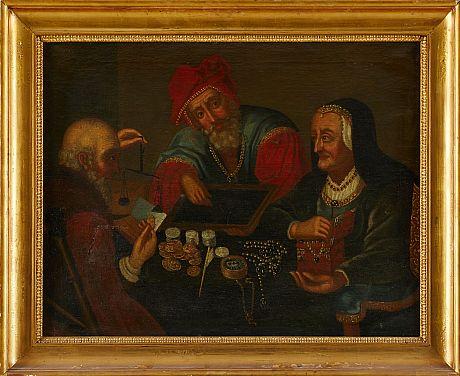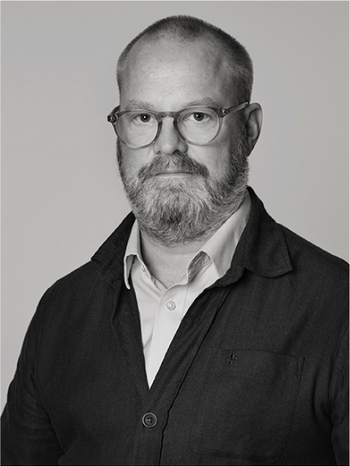Christian (von) Thum
At the goldsmith
Canvas 63 x 83.5 cm
Muut tiedot
Bengt Rapp, ”Djur och stilleben i karolinskt måleri” [Animals and still lifes in Carolingian painting],1951, who devotes a whole chapter to Christian Thum (pp. 27-61), lists only eight known works by him (p. 175, Bilaga II "Förteckning över målningar av Christian Thum”), five of which today are in Swedish public institutions (Stockholm University, the National Museum and Skokloster Castle). The present rediscovered work, unknown to both Rapp and Strömbom, op. cit., constitutes an important addition to Thum’s limited known œuvre. The picture, which surfaced in France, might have been painted in Sweden, alternatively during one of Thum’s two stays in Brabant in 1666 and 1668.
Christian Thum is one of only a few known Swedish painters that were active in Sweden during the seventeenth century, the majority being foreigners summoned to the court and by the aristocracy. Christian Thum was an artist of such great skill and originality that he merits a distinguished place in the history of Swedish art in the 17th century.
Thum was the son of the comedian and innkeeper Christian von Thum. In 1655 he married the daughter of the Royal publisher Heindrick Keijser, Anna Catharina who bore him five children, amongst them Christian Thum, The Younger, (1658-1718) who also became a painter. Christian Thum, The Elder was probably taught painting by Jacob Heinrich Elbfas or Johan Assman in Stockholm and is mentioned as a master painter at the Stockholm painting office in 1655. In the 1650s, he was hired by Magnus Gabriel De la Gardie's sister Countess Maria Sophia De la Gardie to carry out several painting and gilding assignments and in 1664 by Queen Dowager Hedvig Eleonora to carry out a stage decoration with flowers made of paper, wax, gold leaf and gilding for a production of the ballet The Four Seasons at the castle. For Uppsala Castle, he carried out about thirty renovations of older portrait paintings in 1667. He worked on an altarpiece for Arboga city church in 1672 and in 1675, together with Johan Göransson and Jochim Langh, he regilded the coronation chair for Charles XI's coronation in Uppsala. Together with the German painter Johan Hafwersatt (†1727), he painted the decorative elements at Maria Magdalena's church in connection with the reconstruction in 1683–1684. Alongside his work as a painter, he made two trips to Brabant where he bought works of art that were later sold on to, among others, Magnus Gabriel De la Gardie and Hedvig Eleonora. He became an assistant in the Stockholm painting office in 1664 and an alderman in 1667.
In 1988 (Auction 466, lot no 253) Bukowskis sold Thum’s ”Still life with Astronomic Instruments" for 450000 Sek, which must be considered the artist’s masterpiece (now in nationalmuseum NM 6871) (see fig 2).

























































